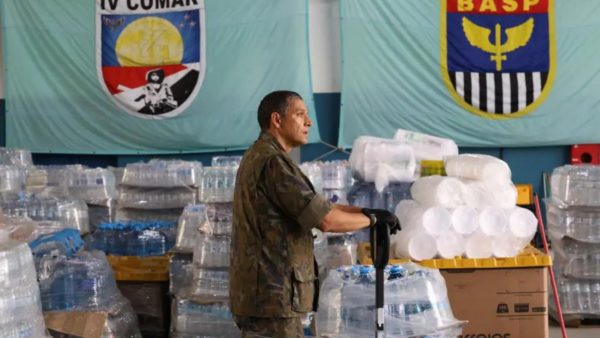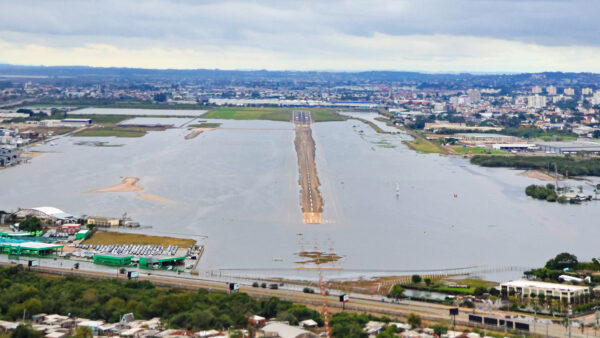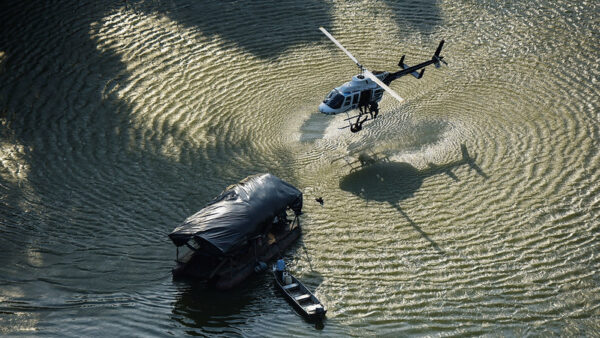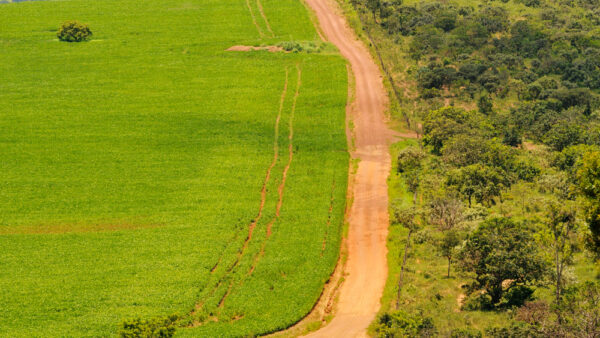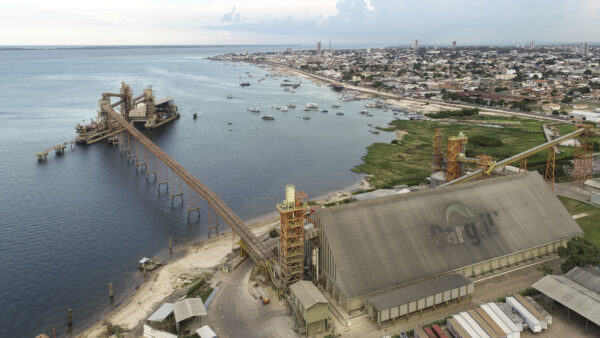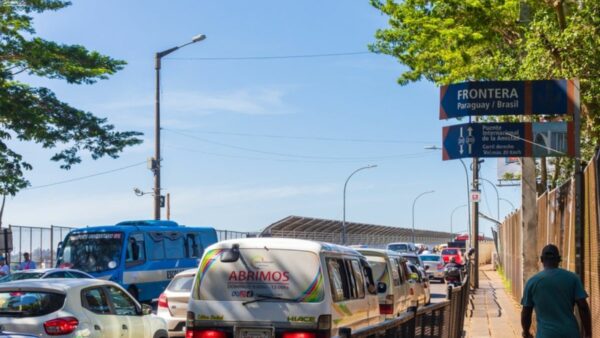Swollen rivers continued rising in Rio Grande do Sul during the weekend as torrential rainfall struck Brazil’s southernmost state once again. On Sunday, Brazilian officials and researchers issued new flood alerts for the coming days.
The Institute of Hydraulic Research at the Federal University of Rio Grande do Sul on Sunday forecast a new rise in the levels of the Guaíba River, which runs adjacent to state capital Porto Alegre. The lake could rise to a record-setting 5.5 meters depending on rainfall and winds, the institute said, well above the flood stage of 3 meters.
The Guaíba River kept rising this Monday morning and had reached 4.8 meters by 9 am. The current record level of the lake (5.33 meters) was reached a week ago.
The National Center for Monitoring and Early Warning of Natural Disasters (Cemaden), a federal agency, issued an alert for the “very high” probability of hydrological risk events in the coming days in both Rio Grande do Sul and its northern neighbor Santa Catarina. The floods should “significantly worsen the situation” in Porto Alegre, Cemaden said, with the Guaíba Lake rising again in the next few days.
Officials in multiple cities underscored the urgency of evacuation orders for residents in low-lying areas, warning that the worst may still be ahead. Water levels in already flooded regions “will continue to rise,” civil defense teams say, potentially to last week’s levels.
“Do not return to flooded areas; stay safe until the water level drops,” authorities said in a statement. A separate alert concerned likely floods in the Taquari and Paranhana Valleys and on hills on the state’s northern coast.
“I insist, it’s not time to go back home. It’s not the time to be in high-risk areas. We need to protect people. Those hillside areas also need to be avoided at this time because the ground is waterlogged and the risks of landslides are real,” said Governor Eduardo Leite.
According to meteorological monitoring company MetSul, excessive rain in Caxias do Sul — the second-most populated city in the state — is likely the cause of earth tremors in the early hours of Monday.
State authorities say more than 2.1 million have been affected by the ongoing Rio Grande do Sul crisis as of Monday. The Rio Grande do Sul floods have killed almost 150 people already. Meanwhile, nearly 620,000 have been forced from their homes, the highest number for a single tragedy on record for Brazil.
The new rains reverse a scenario of lowering river levels that was observed between last Wednesday and the start of the weekend.


 Search
Search
